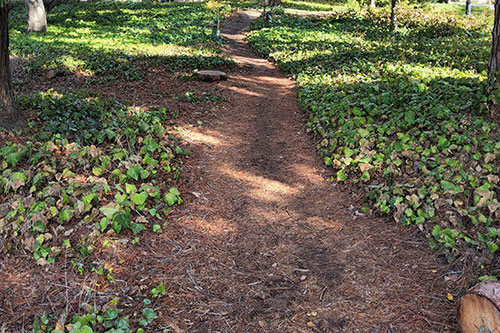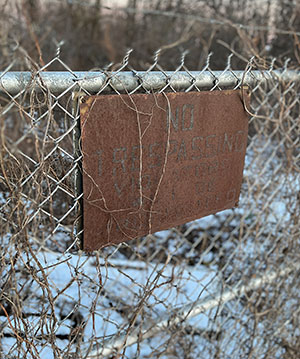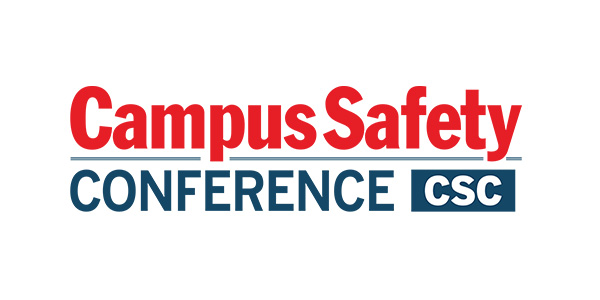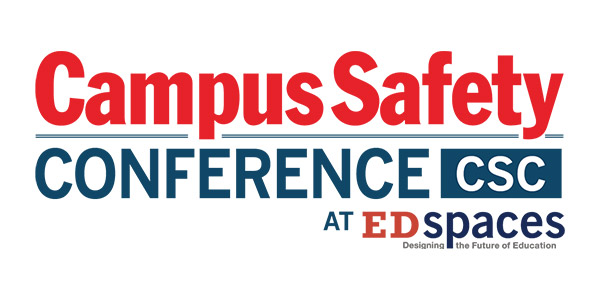It is no easy feat managing the unique challenges and diverse security needs of higher education institutions. With sprawling campuses comprised of various facilities, multiple access points, and complex infrastructure, administrators and campus safety managers often find themselves balancing the need to enhance security with managing escalating costs.
Moreover, as the landscape of threats evolves, it is increasingly crucial to seek solutions that not only protect students and staff but also foster an environment conducive to learning and growth.
Crime Prevention Through Environmental Design (CPTED) offers a valuable framework for designing safer, more secure college and university campuses. It can be one of the most cost-effective approaches to minimizing risk and enhancing security, as it proactively enables the greatest deterrent to a bad actor—witness potential.
By drawing on foundational strategies that interlay into all aspects of criminal behavior, CPTED approaches can increase suspicious activity awareness and highlight illegitimate activities while still preserving the collaborative spirit of a learning environment.
CPTED Strategies Reduce Opportunities for Crime
In recent years, campus safety has emerged as a critical factor in prospective students’ college decisions. Around 60% of students indicate that safety concerns play a significant role in their choice of institution, and it’s a substantial concern for parents as well. Yet, reported criminal activity on college campuses continues to increase. According to 2023 data from the U.S. Department of Education’s Campus Safety and Security (CSS) survey, over 41,000 criminal offenses were reported across 5,673 post-secondary institutions, a 19% increase compared to pre-pandemic levels.
CPTED is a multidisciplinary approach focused on creating environments that reduce opportunities for crime. The core idea is that the physical environment can be designed or modified in ways that increase surveillance, discourage criminal behavior, and promote community cohesion.
RELATED: Can You Spot the Mistakes in These Campus Security Photos?
When incorporated into project planning, CPTED can effectively address vulnerabilities in campus design that impact the safety of faculty, staff, and students, such as poor lighting, undefined pathways, and attractive nuisances. This is achieved by employing strategies that improve visibility within spaces, encourage movement within specified areas, and promote the psychological perception of safety and witness potential.
A core CPTED strategy is to focus on increasing the number of legitimate users in a space, thereby creating potential witnesses and elevating the perceived risk associated with targeting people and property. With more people present to witness, record, and report suspicious behavior, aggressors will think twice before engaging in criminal activity.
5 Principles for Designing Safety within the Physical Environment
By following CPTED’s five core principles—natural surveillance, natural access control, territoriality, activity support, and maintenance—colleges and universities can design and modify their physical environments to effectively address vulnerabilities, reduce opportunities for criminal activity, and enhance the overall safety of their spaces.
1. Natural Surveillance—Promoting Visibility
Natural surveillance is an intentional environmental design strategy that promotes visibility in a space, reduces opportunities for concealment by illegitimate users, and increases witness potential. It directs the strategic placement of building features and landscaping to ensure clear sightlines and create a perceived risk for aggressors. At the same time, it helps occupants feel safer and remain in areas longer.
Strategically designed public, semi-public, or remote spaces that enhance visibility and include features like windows, glass walls, and open floor plans encourage natural surveillance. Elements that promote entrapment, like recessed alcoves, berms, or spaces blocked by large bushes or hedges, should be avoided. When considering design strategies, work with an urban designer and/or a landscaper to review design intent and understand elevations.
RELATED: CPTED in Schools: Has Your Campus Applied These 3 Tactics to Prevent Crime?
When addressing lighting, be cautious about designs that incorporate subtle uses of lighting or mood lighting. Lighting can be one of the most effective deterrents to crime, since darkness represents the best opportunity for concealment. Well-lit hallways, stairwells, gathering spaces, and outdoor walkways allow both users and perpetrators to be seen, reducing the potential for criminal activity.
It should be noted that natural surveillance is not exclusive to exterior spaces and can be equally successful within interior environments, such as cafeterias, student unions, clubhouses, and similar areas.
2. Natural Access Control – Staying on the Path
I often think of The Wizard of Oz when considering principles of campus safety and design. In the film, Dorothy and her companions encounter significant obstacles whenever they stray from the Yellow Brick Road. The Yellow Brick Road itself is more than just a route to the Emerald City—it symbolizes safety and guidance. Staying on the path is associated with progress and protection, while leaving it brings uncertainty and risk.

Informal paths can undermine safety by leading people into poorly lit or less visible areas. (Image courtesy of Affiliated Engineers, Inc.)
Natural access control utilizes the physical design of a space, such as the placement of entrances, exits, pathways, fences, landscaping, doors, gates, and signage, to guide and influence people’s movement. It reduces opportunities for crime by making unauthorized access more difficult and by channeling people and assets into areas where they are more visible or can be monitored, thus increasing the perceived risk for offenders.
A cardinal rule for planners is to design pathways that function like the Yellow Brick Road. Make the path direct, visible, and inviting during the day and night. It’s important to anticipate that users, whether students, faculty, or visitors, will naturally seek the most direct route to classrooms, dormitories, and other campus buildings. If the designed path is inconvenient or not direct, people will create their own shortcuts. These informal paths can undermine safety by leading people into poorly lit or less visible areas, inadvertently creating opportunities for crime.
Lighting also plays a crucial role in natural access control. While effective lighting enhances safety and visibility, not all lighting is welcoming. For example, sodium vapor lighting can create psychologically unfriendly environments that discourage legitimate users from remaining in the space, unlike the more inviting quality of LED lighting.
3. Territoriality – Defining the Boundaries

Maintaining signage is essential for establishing a clear sense of ownership and control over a space, creating a safe and well-defined environment. (Image courtesy of Affiliated Engineers, Inc.)
While the concept of territoriality might initially evoke images of fortress-like spaces, its role within the framework of CPTED is far more nuanced and integral to creating a safe and well-defined environment. Territoriality involves establishing a clear sense of ownership and control over space, where legitimate users are compelled to comply with expected travel patterns. It is closely linked to the key principles of natural access control, natural surveillance, and maintenance.
Territoriality helps to define where a property begins and ends, establishing clear boundaries between public, semi-public, and private spaces. Boundaries can be overt or subtle. More overt markers include physical barriers that demarcate territory, like fences, walls, or gates. Less conspicuous methods, such as decorative landscaping or signage, can subtly introduce the designation of spaces. For example, large flower beds, strategically placed hedges, or the introduction of defensive plants (like thorny bushes or prickly shrubs) can signal a transition from public to private space, giving the sense that an area is “owned” or monitored and not to be entered.
Territoriality can be further enhanced by the strategic use of lighting. Proper illumination not only creates a sense of security but also highlights key paths and access points, directing people to use designated travel patterns and reinforcing natural access control. By managing access in this way, we can channel movement in ways that reduce opportunities for crime, making it easier to control and predict the flow of people.
In remote or less-trafficked areas, technology like surveillance cameras can support territoriality by providing an additional layer of monitoring. Signage indicating the presence of security or a call-for-assistance system can further reinforce territoriality by signaling to potential offenders that the area is being actively observed or that help is readily available should a problem arise.
4. Activity Support—Bringing People to the Space
Activity support refers to strategies or measures designed to encourage and facilitate legitimate activities in a specific space. In the context of CPTED, activity support aims to promote positive use of areas, increase the presence of legitimate users, and enhance witness potential, therefore reducing opportunities for crime.
Activity support can be used in conjunction with natural access control. For example, pathways can be routed near potential problem areas, such as potable water sources, spaces that promote concealment, and elevated areas. Food trucks and other attractions can be introduced to create circulation that draws pedestrian activities and indirectly increases legitimate pedestrian densities.
In one case, simply changing the environment in a space improved safety and saved thousands of dollars. The challenge involved an off-campus location with basement restrooms below grade. These restrooms had become an attractive nuisance, enabling the possibility of drug overdoses, vagrant use, and other illegitimate activities. Even more concerning was that no one would be able to hear calls for help if someone was being attacked or needed medical attention.
We considered various reactive solutions to address the potential risks, such as surveillance cameras, call-for-assistance systems, scream alerts, restroom access control, medical pull stations, and duress buttons. However, the simplest and most effective approach was to activate the space.
We relocated the vending machine from the main level to the basement and added seating to create a community area. Signage and wayfinding were provided to clearly communicate the changes. The result was a safe space that did not require thousands of dollars in technology but instead used people to support security through witness potential.
5. Maintenance—Creating Curb Appeal
The “Broken Windows Theory” best represents the maintenance principle of CPTED. Introduced in 1982 by social scientists James Q. Wilson and George L. Kelling in The Atlantic, the theory suggests that visible signs of disorder and neglect in an environment, such as broken windows, graffiti, or litter, can lead to increased crime and antisocial behavior.

Unkempt areas with overgrown foliage create opportunities for concealment. (Image courtesy of Affiliated Engineers, Inc.)
University campuses are living works of art, where the integration of architectural elements and focal points creates engaging environments for learning and community. The beauty of these spaces must be maintained through consistent upkeep, as nothing is more fundamental to security than clearly defining ownership. However, maintenance challenges often go undetected because deterioration occurs gradually; trash accumulates incrementally, vandalism expands slowly if left unaddressed, and infrastructure failures develop progressively, making problems less perceivable over extended periods.
Territorial demarcation can be partly established through enhanced curb appeal, a powerful deterrent that can potentially influence an aggressor’s targeting. Prompt repair of vandalism, infrastructure maintenance, trash removal, and manicured landscaping send a powerful message that people care about and actively monitor these areas. The most effective approach to creating curb appeal is to treat the campus like a home being staged for sale—evaluate it critically from an outsider’s perspective, address issues promptly, and prioritize elements that create a positive first impression.
Enhancing campus curb appeal also delivers benefits by potentially increasing enrollment. Prospective students and parents make quick judgments about institutional quality based on campus appearance, which can be the deciding factor in today’s competitive higher education landscape. Along with campus maintenance, clean patrol vehicles, professional uniforms, and good hygiene are environmental traits that visiting students and parents immediately notice.
Building a Path to a Safer Campus
CPTED strategies enable colleges and universities to create safe environments that foster learning and maintain the spirit of higher education. Just as Dorothy brought together a diverse group of companions with unique strengths to navigate the Yellow Brick Road, assembling thoughtful, multidisciplinary planning teams is key to developing safe spaces in the campus environment. This involves enlisting the services of architects and designers as well as security consultants who can conduct thorough assessments, identify potential crime risks, and offer tailored recommendations for design modifications.
RELATED: 5 CPTED Strategies That Protect Students and Staff
These teams do more than write policies or place cameras. They lay the foundation for a symbolic Yellow Brick Road—a pathway that reflects intention, safety, and community. It is a road that students, faculty, and staff willingly and confidently travel on a campus where safety is visible, felt, and foundational to crime prevention.
Sean A. Ahrens, CPP, CHPA FSyl, CSC, BSCP, is a Project Manager for Affiliated Engineers, Inc.’s security consulting and design practice, where he provides consulting, assessments, and design solutions that reduce security exposures within domestic and international markets. A certified security consultant, Sean is a premises liability expert and serves on the board of directors for the International Association of Professional Security Consultants (IAPSC). He can be reached at [email protected]
NOTE: The views expressed by guest bloggers and contributors are those of the authors and do not necessarily represent the views of, and should not be attributed to, Campus Safety.







